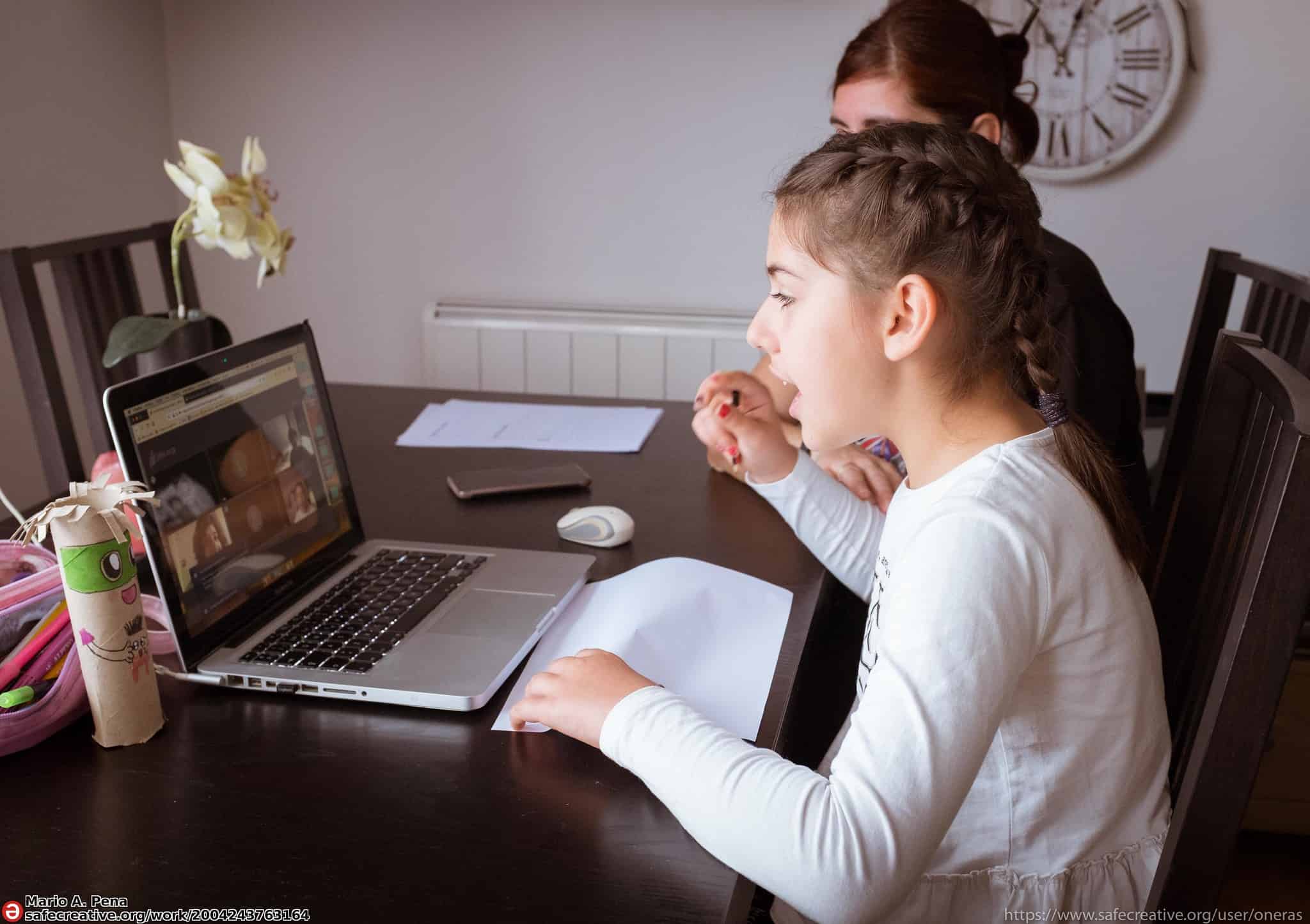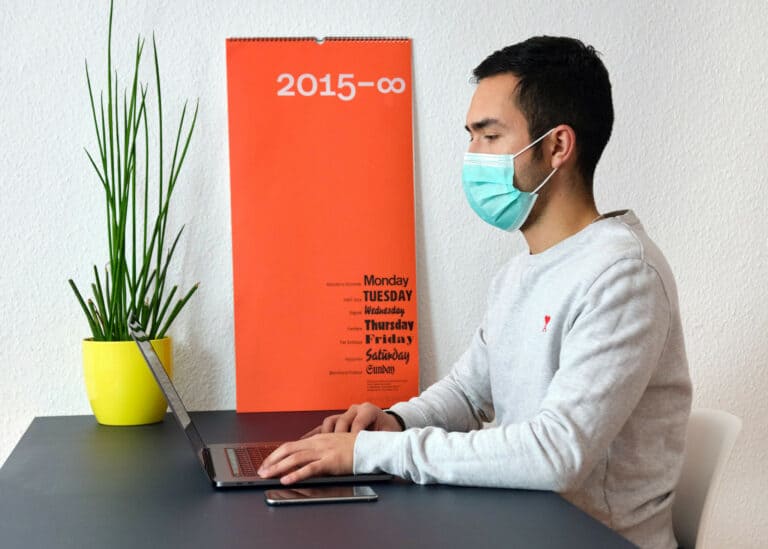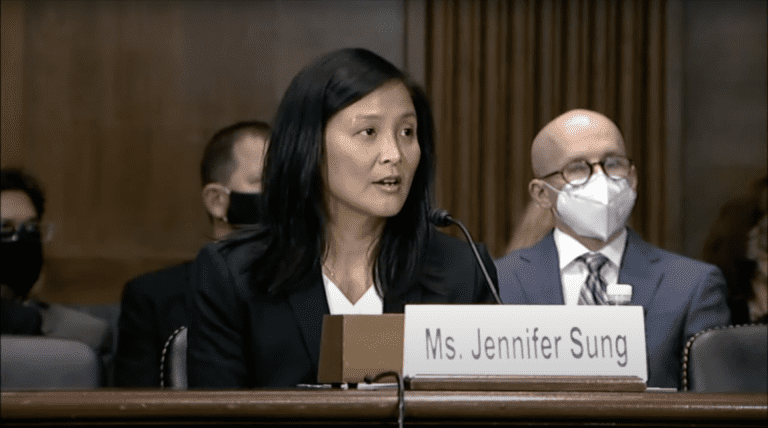
Julia Huang is a student at Harvard Law School and a member of the Labor and Employment Lab.
More than a year since the COVID-19 pandemic resulted in roughly half of paid work hours being logged from home, many workers continue to opt into working remotely. In a survey of 33,250 participants conducted by the University of Chicago’s Becker Friedman Institute between May 2020 and March 2021, 77.6% of those able to work from home reported wanting to do so at least one day a week post-pandemic. With many employers now signaling an acceptance of the hybrid work model, 21.3% of full workdays are likely to be worked at home.
This number is even higher than it may first appear given that many workers cannot work from home at all. For example, only a small percentage of workers in the following industries are able to perform their work remotely: 4% of food services; 14% of retail workers; and 19% of transportation and warehouse workers. In comparison, over 75% of jobs in the following industries can be performed remotely: educational services; professional, scientific, and technical services; management; and finance and insurance.
Despite the fact that workers with the ability to work remotely may prefer to do so, many of them have and will continue to experience adverse consequences from working in a remote environment.
Workplace Discrimination
With the move to remote work, some employees have taken advantage of virtual and typically unmonitored, one-on-one channels of communication to harass coworkers. Without the bystanders of an in-person workplace to intervene, harassers may believe that their misconduct on video or messaging apps, ranging from derogatory words to inappropriate behavior, will go unpunished. This virtual form of a hostile work environment can be particularly damaging as victims must experience it in their own homes and may not feel like they can escape.
A survey by Project Include of 2,796 tech workers, where 97% of workers were remote, found that 30% had reported experiencing increased gender-based hostility at work since the start of COVID-19. 98% of those reporting gender-based hostility were women and/or nonbinary people. In a Deloitte survey of 5,000 women, 52% reported having experienced some form of harassment or microaggression in the past year. Any behavior that undermines equality qualifies as sexual harassment. Comments or questions on appearance, virtual backgrounds, or availability can all constitute harassment.
The same Project Include survey reports that 94% of those who experienced increased hostility were multiracial, Latinx/Hispanic, Asian/Asian American, or Black/African/African American. 42% of transgender respondents reported increased gender harassment. LGBTQ+ women in Deloitte’s survey were almost four times more likely to report experiencing jokes of a sexual nature than non LGBTQ+ women.
On the other hand, remote work has protected workers of color from certain microaggressions, such as comments surrounding hair or lunch choices, and has reduced the need to code switch. Hiring remote workers has also allowed companies to hire diverse candidates based in other cities. Even with these benefits, however, Black and Hispanic workers have faced increased isolation and exclusion from networking opportunities. A survey of college students by WayUp found that Black and Hispanic/Latino respondents were 145% more likely than White respondents to feel concerned about their ability to do a job remotely. With data showing that Black and Hispanic households have 20% to 80% more people than White households and a lower likelihood of having broadband internet, issues with finding quiet, teleconference-appropriate workplaces have aggravated existing racial and income disparities.
Demands to be present even while working remotely has put pressure on caregivers to children, elderly parents, or other relatives with disabilities or health conditions. Despite the reduction in commuting hours during the pandemic, virtual schooling and shortages in long-term care workers have led to an increase in homelife responsibilities. Caregivers and parents working from home have sought reasonable accommodations from their employers to adjust their schedules, but they oftentimes face a flexibility stigma as a result. While right-to-disconnect laws have been adopted by some European countries, workers who request more flexibility in the United States are considered “time deviants.” 20% of caregivers have reported feeling like their professional development suffered during the pandemic because of their caregiving responsibilities. The Center for WorkLife Law has published particular instances of parental discrimination.
Workers with disabilities have reported various benefits to working remotely: commuting is no longer an obstacle; precious energy is saved; and technology has aided communication. Nevertheless, disability discrimination has also been on the rise during the pandemic, with employers denying requests for accommodations and demoting, suspending, or terminating workers shortly thereafter. In most cases, workers with disabilities continue to be the last hired and the first fired. Expanding remote work for workers with disabilities is considered a vital step to improving their employment rates.
In the virtual workplace, older workers are more likely to suffer from age discrimination as a result of judgments that they are unable to work with technology or that they are more vulnerable to COVID-19 and therefore, less likely to come back to the office. A study by SeniorLiving.org found that during the pandemic, the unemployment rate for workers over the age of 55 increased more than that of other age groups.
Legal Protections
Under Title VII of the Civil Rights Act of 1964, it is unlawful for an employer to “discriminate against any individual…because of such individual’s race, color, religion, sex, or national origin.” With the added protections of the Age Discrimination in Employment Act of 1967 (ADEA) and the American with Disabilities Act of 1990 (ADA), employers are prohibited from discriminating on the basis of age (over 40) or disability. Title VII also protects parents and caregivers if the discrimination is rooted in gender bias, while the ADA protects caregivers’ disability association. Many other state and local laws prohibit discrimination against employees based on these protected classes.
Harassment, as defined by these statutes, includes “offensive conduct” or “conduct [that] is severe or pervasive enough to create a work environment that a reasonable person would consider intimidating, hostile, or abusive.” These protections against a hostile work environment remain even if workplaces go virtual. However, current video applications may not be equipped with an obvious mechanism to report such inappropriate conduct. Even when harassers carelessly or willingly leave a text record of their harassment on messaging applications, Project Include’s CEO Ellen Pao suggests that there is an assumption that victims will not report it because victims do not trust their companies to appropriately handle the situation. For example, according to a May 2021 account, Google wrongly labeled harassing messages and events between two of its workers as a “private matter” and not as a workplace issue because the relevant events took place at home. Google failed to act even when it was the one to order the workers to stay at home.
Now that we are entering a hybrid work model, employers are also at risk of discriminating against employees if they base who comes back to the office on protected characteristics. Those who remain remote may believe that in-person colleagues are preferentially receiving better work opportunities and earlier promotions. Denying the ability to continue working remotely can also warrant a cause of action. In a press release dated September 7, 2021, the Equal Employment Opportunity Commission announced that it had filed its first COVID-19-related lawsuit under the ADA against an employer who allegedly denied a worker the reasonable accommodation of remote work two days a week.










Daily News & Commentary
Start your day with our roundup of the latest labor developments. See all
April 24
Workers in Montreal organize the first Amazon warehouse union in Canada and Fordham Graduate Student Workers reach a tentative agreement with the university.
April 23
Supreme Court hears cases about 10(j) injunctions and forced arbitration; workers increasingly strike before earning first union contract
April 22
DOL and EEOC beat the buzzer; Striking journalists get big NLRB news
April 21
Historic unionization at Volkswagen's Chattanooga plant; DOL cracks down on child labor; NY passes tax credit for journalists' salaries.
April 19
Alabama and Louisiana advance anti-worker legislation; Mercedes workers in Alabama set election date; VW Chattanooga election concludes today.
April 18
Disneyland performers file petition for unionization and union elections begin at Volkswagen plant in Tennessee.